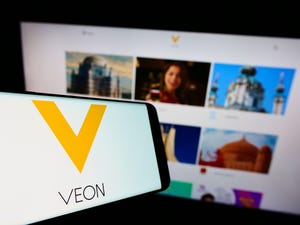Making TV Apps Count
In the growing universe of TV apps, how do you get yours to stand out?
August 16, 2013

Potential fan favorites, flops, Emmy award winners, and stinkers are all about to compete for… an icon on your mobile device.
I'm not talking about TV programming or services. Rather, a flood of TV-related apps are being hurried out of the lab and onto the showroom floor of your favorite app store. While some of these apps are already capturing rave reviews, others are already on the road to cancellation.
With mobile device penetration and multitasking during TV viewing at an all-time high, players throughout the TV ecosystem are eagerly jockeying to find their position on the little screen. Since the market for TV-related apps is just in its infancy, everyone is experimenting to find just the right recipe to attract users, create compelling experiences, and leverage their business model or strategic position.
Some industry players are cooking up very basic apps that provide little more than program information and a platform to display ads. Others are blending together interesting, full-featured apps that provide interactivity, special content, social networking features, and games.
For players in the TV industry, the app represents a way to address unique industry challenges.
For broadcasters, who rely upon ad revenues as their primary business model, mobile devices have taken ad-skipping to a new level. Rather than running to the kitchen for a snack, viewers now use ad breaks as a chance for more quality time with their smartphones and tablets. Broadcasters see the second screen as a chance to limit ad-skipping by providing users with a compelling reason to stay engaged with their programming during the break.
Pay-TV providers are interested in a different kind of skipping, as in subscribers skipping out on them to other services, including OTT or direct competitors. For years, if consumers wanted to find content, the EPG was the only game in town. The growth of mobile devices has changed that dynamic, and many consumers are learning about programming through Web searches, social media, and other tools available via smartphones and tablets.
Surveys of US broadband homes show that one-third of smartphone and tablet owners use their devices to find out more information about the content that they are watching. As subscribers take their eyes off the TV and the EPG, they can encounter other content options. Mobile apps provide pay-TV providers with a way to stay front-and-center as the viewer's primary interface to content.
Networks and other content creators are interested in building and maintaining an engaged audience for their programming. After all, high ratings lead to more ad dollars and a greater likelihood of a program being picked up for a new season. Many content creators see apps and second-screen experiences as a chance to keep audiences interested outside the primary broadcast window, both between episodes and between whole seasons.
Ultimately, consumers are unlikely to use all of the apps put in front of them. Some players will enjoy strong adoption of their app attempts. Others will find their apps haunting the depths of the app popularity rankings. To be successful, TV apps and second-screen experiences should:
Encourage repeated or regular use. Parks Associates' survey data show that smartphone owners regularly use only six apps on average. Tablet owners use only four apps. An app experience must be dynamic, with content that changes regularly and features that encourage users to return.
Provide unique value. To hold consumers through breaks, the app or second-screen experience must be compelling enough that it is better than what users could do on their own. Why would consumers use an app with a social networking feature rather than just go to Facebook, Instagram, or Twitter? They will only do so if the in-app experience offers something they can't get elsewhere.
Be supported by ongoing development. Neither consumers nor the CE industry will stand still. To stay relevant, companies will need to update apps continuously and provide versions for new, emerging mobile devices. Consumers have many options when it comes to apps, so as soon as they encounter problems with one, they will jump to another app offered by someone else.
Over time, experimentation will reveal the best recipes for successful apps, including those features and use cases that most matter to consumers and produce benefits for industry players. TV apps will mature, and the experiences will become better and more immersive.
So, when talking about new series, popular movies, or big events like the Super Bowl or the FIFA World Cup, viewers will also ask each other, "Did you try that app?" Ecosystem players will need to take the necessary steps to ensure their app is the one discussed.
— Brett Sappington, Director of Research, Parks Associates
About the Author(s)
You May Also Like












